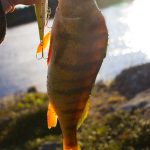1. Getting Started: Essential Gear for Dock and Shore Fishing
If you’re new to fishing from docks or the shoreline, you don’t need a boatload of fancy gear to get started. Dock and shore fishing is all about simplicity, fun, and accessibility. Here’s a quick guide to the basic equipment every beginner should consider before heading out to the water.
Fishing Rods
When it comes to rods, you’ll want something easy to handle but strong enough to catch local fish. For most beginners, a spinning rod between 6 and 7 feet is perfect. It gives you enough length for good casting while still being manageable on a dock or shore.
Reels
A simple spinning reel is your best bet as a beginner. These reels are user-friendly, reliable, and great for a wide variety of fish species found near docks and along the shoreline.
Tackle
Your tackle box doesn’t need to be overflowing. Start with these basics:
| Item | Purpose |
|---|---|
| Hooks (sizes 6-1/0) | Catching small to medium fish commonly found near docks |
| Sinkers | Helps your bait sink to the right depth |
| Bobbers/Floats | Keeps bait suspended in the water; easy bite detection |
| Swivels | Prevents line twists when using certain lures or baits |
| Artificial Lures & Soft Plastics | Mimics small fish or insects; great for bass, panfish, and more |
| Bait (worms, minnows) | Natural option that appeals to many species |
Accessories You’ll Need
- Pliers: For removing hooks safely from fish.
- Tackle box or bag: Keeps everything organized and easy to carry.
- Fishing license: Required in most states—check your local regulations before heading out.
- Sunscreen and hat: Protect yourself from the sun during long hours outside.
- Bucket or stringer: If you plan on keeping your catch.
- Measuring tape: Helps ensure your catch meets size requirements set by state laws.
Pro Tip for Beginners:
If you’re not sure what kind of fish are around your local dock or shoreline, stop by a nearby bait shop or ask other anglers you see fishing. They’re usually happy to share tips on what works best in that spot!
2. Best Spots on the Dock: Finding Where Fish Like to Hide
Understanding Fish Behavior Around Docks
If you’re new to dock fishing, knowing where fish like to hang out can make all the difference. Fish love spots that offer them food, shade, and protection from predators. Docks and shorelines have plenty of these “hotspots,” but finding the right one is key to getting bites.
Top Dock Fishing Locations
Below is a quick guide to some of the most productive places around docks and shorelines:
| Location | Why Fish Love It | Tips for Anglers |
|---|---|---|
| Pilings & Posts | Attract small fish and bait, which brings in larger fish. | Cast close, but watch out for snags. Try using live bait or jigs. |
| Shaded Areas | Offer cooler water and protection from sunlight. | Early morning or late afternoon are best times. Use natural-colored lures. |
| Weed Beds & Grass Lines | Provide cover and attract insects and baitfish. | Use weedless rigs to avoid getting tangled. Cast along the edges for best results. |
| Drops Offs Near Shore | Fish wait here to ambush prey moving from shallow to deep water. | Try sinking baits or soft plastics. Let your lure drop naturally. |
| Floating Debris & Boat Lifts | Create shade and hiding spots for bass, panfish, and more. | Target shady pockets with lightweight baits or bobbers. |
How to Spot Productive Fishing Areas
- Look for movement: Ripples or jumping baitfish often mean bigger fish are nearby.
- Check water clarity: Slightly murky water near structure attracts hungry fish looking for an easy meal.
- Notice bird activity: Birds diving into the water often signal schools of baitfish below.
- Watch water temperature: Cooler spots (like shaded areas) are especially good during summer heat.
Pro Tip: Change Up Your Casting Angles
If you’re not having luck in one spot, try casting from a different angle or moving down the dock a few feet. Sometimes just a small change can put your bait right in front of a waiting fish!
![]()
3. Choosing the Right Bait and Lures
Picking the right bait and lures is one of the most important steps for successful dock fishing. The types of fish you’ll find hanging around docks and shorelines in the U.S.—like bass, bluegill, catfish, and crappie—each have their own favorite foods. Here’s a simple guide to help you choose what works best for your local fishing spot.
Popular Live Baits for Dock Fishing
Live bait often attracts more bites, especially from picky fish. Here are some common options:
| Bait Type | Best For | How to Use |
|---|---|---|
| Nightcrawlers (Worms) | Bluegill, Bass, Catfish | Thread onto a small hook, let it dangle near dock pilings or under the dock |
| Minnows | Crappie, Bass, Perch | Hook through the lips or back, use with a bobber to keep at desired depth |
| Corn or Dough Balls | Carp, Catfish | Mold onto a small hook, cast out and let sit on the bottom near shore or dock edge |
| Shrimp or Cut Bait | Catfish, Saltwater Species | Cut into pieces and place on a strong hook; works well near docks with deeper water |
Top Artificial Lures for American Docks & Shores
Lures are great because they can be used over and over again. They also let you cover more water and target active fish.
| Lure Type | Looks Like | Best For | Tips for Use |
|---|---|---|---|
| Soft Plastic Worms/Grubs | Worms or insects | Bass, Bluegill, Crappie | Rig “wacky style” or with a jig head; twitch slowly near dock structures |
| Poppers/Topwater Plugs | Struggling baitfish on surface | Bass, Panfish | Cast close to dock pilings early or late in the day; use short jerks to make splashes |
| Spinnerbaits/Inline Spinners | Flashing minnows/shiners | Bass, Pike, Perch | Retrieve at steady pace along dock edges or drop-offs to trigger reaction strikes |
| Spoons/Jigs | Darting baitfish or shrimp | Bass, Crappie, Trout (in cooler regions) | Bounce off bottom near docks or swim through shaded areas under docks where fish hide during sunny days |
Tips for Choosing Bait & Lures Around American Docks:
- If you’re new to an area, ask local anglers or bait shops what’s working best—they know what local fish are biting!
- If water is clear and calm, go with smaller baits and natural colors; if it’s murky or after rain, try larger baits and brighter colors.
- Docks often hold fish hiding from sun or predators—try casting near shaded spots and moving your bait slowly.
Remember:
The right bait can make all the difference between just fishing and actually catching something. Keep experimenting until you find what local fish want that day!
4. Dock Etiquette and Safety Tips
When you’re fishing from a dock, following proper etiquette and safety guidelines is just as important as knowing how to cast your line. Public docks are shared spaces, so respecting others and staying safe ensures everyone has a good time. Here’s what you need to know:
Unwritten Rules of Dock Courtesy
| Etiquette Rule | What It Means |
|---|---|
| Share Space | Don’t spread out too much gear; leave room for others. |
| Quiet Conversations | Keep noise down, especially early mornings or late evenings. |
| Be Mindful of Casting | Look around before casting to avoid hooking someone else. |
| Respect Other Anglers’ Spots | If someone was there first, don’t crowd their fishing spot. |
| Clean Up After Yourself | Take all trash, bait containers, and tangled line with you. |
| Help When Needed | If someone needs help landing a fish or untangling a line, offer assistance if you can. |
Essential Dock Safety Practices
- Wear Non-Slip Shoes: Docks can get wet and slippery—shoes with good grip help prevent falls.
- Supervise Children: Always keep an eye on kids near the water. Life jackets are a smart idea for young ones.
- Avoid Running: Move slowly and carefully on docks to avoid accidents.
- Mind Your Hooks and Knives: Keep sharp objects safely stowed when not in use to prevent injuries.
- Stay Aware of Weather: If storms approach or lightning is nearby, leave the dock immediately for safety.
- Watch for Boaters: Be aware of boats coming in or out—give them space to dock or depart safely.
Troubleshooting Common Dock Issues
| Issue | What To Do |
|---|---|
| Tangled Lines with Others | Calmly communicate and work together to untangle. Avoid blaming anyone. |
| Loud Groups Nearby | If it’s bothering you, politely ask if they can lower their volume or find another spot if possible. |
| Crowded Dock | If the dock is full, wait your turn or check back later rather than squeezing in unsafely. |
A Little Courtesy Goes a Long Way!
A positive attitude and respect for others make dock fishing enjoyable for everyone. Remember these simple tips next time you head out—your fellow anglers will thank you!
5. Making Memories: Family-Friendly Dock Fishing
How to Make Dock Fishing Fun for Everyone
Dock fishing isn’t just about catching fish—it’s a great way to spend quality time with your family. Whether you’re a parent, grandparent, or just bringing along some young friends, a day on the dock can be packed with fun and learning. Here are some easy tips to make sure everyone has a blast:
Kid-Friendly Activities to Try While Dock Fishing
| Activity | Description |
|---|---|
| Fish ID Scavenger Hunt | Bring a simple fish guidebook or printouts. Challenge kids to spot and identify different types of fish in the water or that you catch. |
| DIY Tackle Box Decorating | Let kids decorate their own small tackle box with stickers or markers before heading out. It gives them ownership of their gear and gets them excited. |
| Casting Contests | Set up a safe area for casting practice using rubber weights or bobbers. See who can cast the farthest or hit a floating target. |
| Pond Dipping & Netting | Give youngsters small nets to scoop up minnows, tadpoles, or insects from the edge of the dock—just remember to release them back gently! |
| Snack Time Picnic | Pack favorite snacks and drinks. Spread out a blanket on the dock for a mid-fishing picnic break. |
Simple Ways to Teach Kids About Fishing and Conservation
- Show How to Handle Fish Gently: Teach kids how to wet their hands before touching fish and how to release them carefully back into the water.
- Explain Basic Fishing Rules: Talk about size limits, catch-and-release, and why they matter for keeping fish populations healthy.
- Clean Up Together: Make picking up trash part of your routine, helping kids understand why it’s important to leave nature better than you found it.
- Talk About Local Wildlife: Point out birds, turtles, frogs, and other animals that live near docks. It’s a great way to spark curiosity about nature.
- Celebrate Small Wins: Remember, it’s not always about catching the biggest fish! Celebrate every catch—big or small—and all the effort put in by young anglers.
Pro Tip:
If you’re fishing at a public dock or park, check if they offer loaner rods or free fishing clinics for kids. Many places across the U.S. have community programs designed to help families get started without needing a lot of gear.


